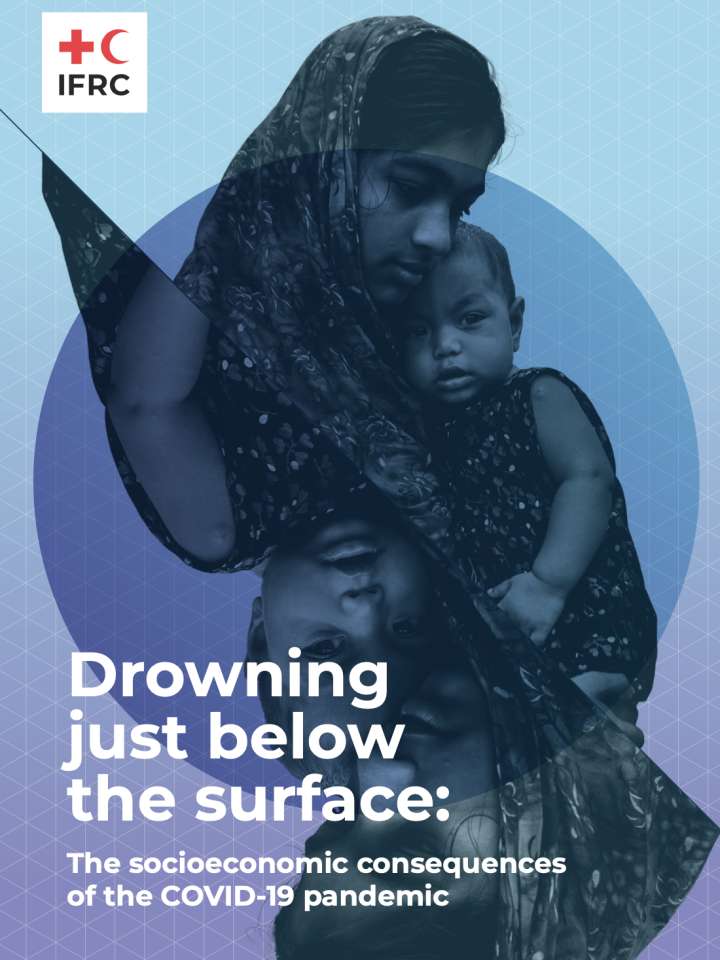Drowning just below the surface: The socioeconomic consequences of the COVID-19 pandemic
This report, featuring brand new research from Red Cross and Red Crescent Societies around the world, sheds light on who has been most impacted by the pandemic and how. It also examines how Red Cross and Red Crescent Societies have adapted their responses to support newly and increasingly vulnerable communities—many of whom have also been affected by large-scale disasters and other complex humanitarian crises. The COVID-19 pandemic has had major economic, as well as health, impacts on every nation in the world. It has amplified existing inequalities, created new ones, and destabilized communities—reversing development gains made in recent decades. The enormous socioeconomic impacts of COVID-19 are wide-ranging and have not affected everyone equally. Throughout this pandemic, those facing the greatest vulnerabilities have been the people and groups most neglected by society—those who were already drowning just below the surface.
This research finds that there are three groups especially at risk: First, women were disproportionately affected compared to men. Second, in many countries, people living in urban areas were more severely affected by the socioeco- nomic impacts of the pandemic. Finally, the pandemic was uniquely threatening to migrants, internally displaced people and refugees. Despite the complexities, what is certain is that the socioeconomic impacts of the pandemic will be felt for many years to come. Healing the socioeconomic injuries caused by the pandemic will be the work of years or even decades. Doing so will require a sustained effort to mitigate the underlying inequalities. The paper identifies four key areas to build on:
- Ensure a global and equitable vaccination programme, so that all countries are able to begin socioeconomic recovery.
- Long-term conditions or outcomes, such as poor mental health, loss of education, child marriage and increased deprivation must be addressed.
- Fairer societies must be constructed in which new forms of solidarity emerge and where efforts are invested to provide inclusive public services such as health, basic facilities and access to education.
- Humanitarians must continue to recognize that COVID-19 is just one of many intersecting crises, and devise assistance programmes that build greater overall resilience in vulnerable families and communi- ties, led by local investment and participation.
Explore further
